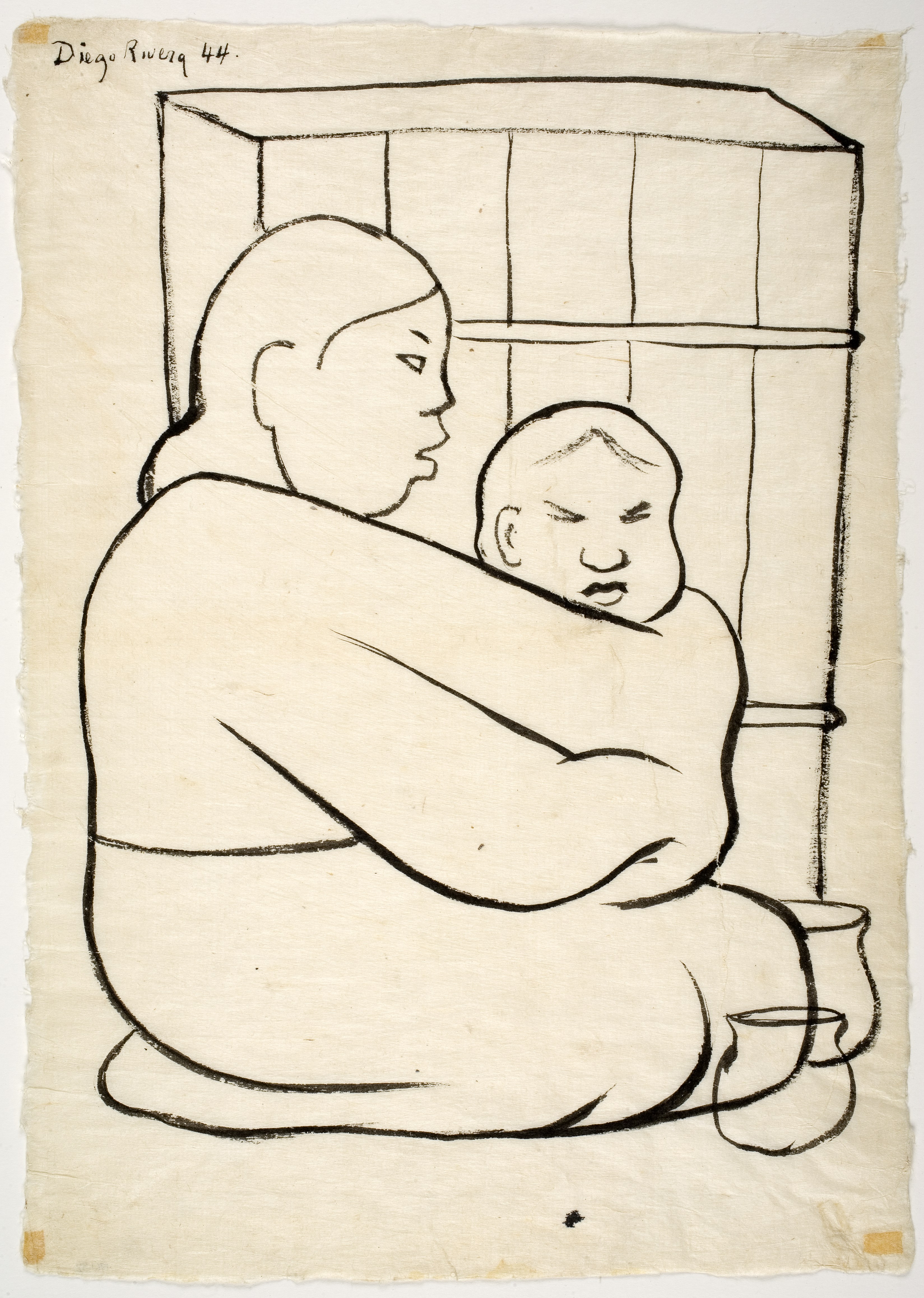Mother and Child

Diego Rivera, Mother and Child, 1944.
Brush and black ink, sheet: 15 1/4 in. x 15 in. (38.7 cm x 38.1 cm).
The Dorothy Braude Edinburg (Class of 1942) Collection, 1961.32
Diego Rivera’s Mother and Child portrays a mother and an infant; the mother kneels in front of a large crate, holding her child closely to her while the child looks away with a belligerent expression. The two figures appear as inextricably linked; the child is swathed in cloth hung around the mother’s neck and the mother’s arm blends into the body of the child, which both serve to express the intimacy and tenderness often associated with motherhood. Executed in contour lines rendered in Chinese black ink, Rivera renders few details. For Diego Rivera, the working class was a common subject. He signals the marginalized position of the mother and child by employing these few details and juxtaposing them with the large crate in the background.
Well known for his proletarian subjects, Rivera is often considered part of the Social Realist movement. He was born on December 8, 1886 in Gaunajuato, Mexico and attended the San Carlos Academy of Fine Arts in Mexico City. Like many of his contemporaries, Rivera traveled to Europe in the 1900s, where he became friends with fellow artists such as Pablo Picasso (1881–1973) and was introduced to the European avant-garde. He adopted a Cubist style of painting there but his return to Mexico in 1921 brought new inspiration. Commissioned by the government, Rivera began working on monumental murals for public buildings. Deeply impacted by the Mexican Revolution, Rivera often depicted famous revolutionaries alongside the working class. Some of his murals have garnered controversy because of the inclusion of Communists such as Vladimir Lenin and Mao Zedong among those represented.
Rivera’s history of monumental painting lingers in this work; the two figures fill the sheet of paper, both enhancing their importance and ennobling the pair. His work conveys messages in a legible manner, often relying on simplified forms. Mother and Child is an example of this legibility, using the bare minimum to convey the shapes of the two figures. The universal relationship between mother and child is expressed clearly and the work speaks as well to the struggle of the working class.
Charlotte Xiang ‘16
Curatorial Intern, Summer 2014